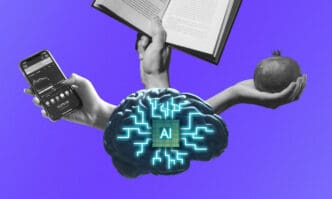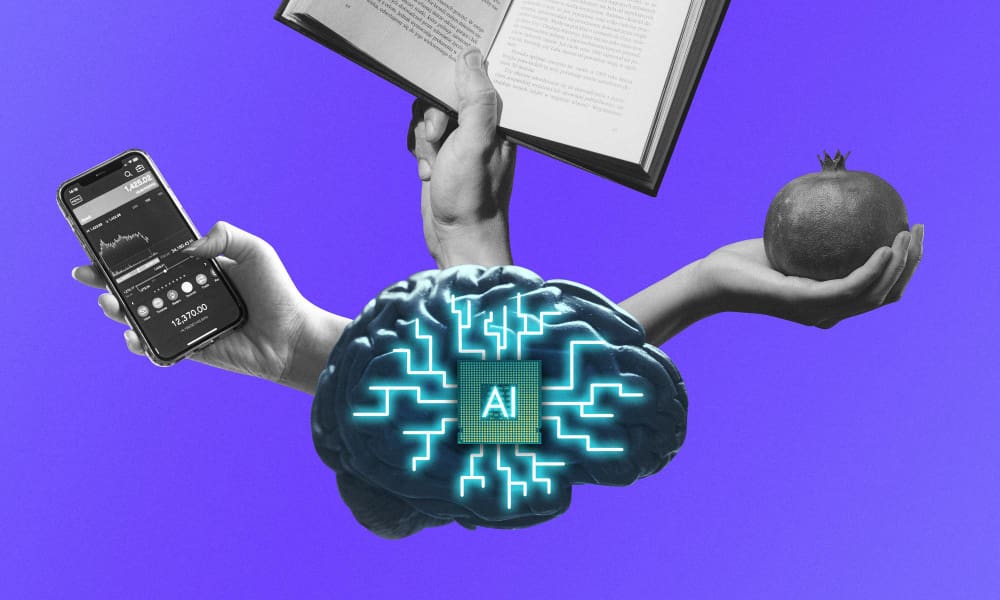Generative AI, a revolutionary class of artificial intelligence that creates entirely new content, is rapidly moving from the tech lab to the boardroom, empowering businesses of all sizes to automate creative tasks, hyper-personalize customer experiences, and unlock unprecedented productivity gains. Spearheaded by models like OpenAI’s GPT-4, this technology is no longer a future concept but a present-day tool being deployed across marketing, software development, and customer service. The core reason for this seismic shift is its ability to transform human-computer collaboration, turning simple text prompts into everything from marketing copy and computer code to strategic business reports, forcing leaders to adapt or risk being left behind.
What Exactly is Generative AI?
At its core, generative AI is a type of artificial intelligence that doesn’t just analyze or classify existing data; it generates new, original content. This content can take many forms, including text, images, music, video, and even computer code. Think of it as a creative partner rather than just an analytical tool.
This stands in stark contrast to traditional AI, often called analytical or predictive AI. For years, businesses have used predictive AI to forecast sales, identify customer churn, or detect fraudulent transactions. That type of AI excels at finding patterns in existing data and making predictions based on them.
Generative AI, however, learns the underlying patterns and structures from vast datasets and then uses that knowledge to produce something entirely novel. It’s the difference between an AI that can tell you if a photo contains a cat (analytical) and one that can create a photorealistic image of a cat wearing a spacesuit (generative).
The Technology Powering the Revolution
The recent explosion in generative AI capabilities is largely thanks to advancements in neural network architectures, particularly Large Language Models (LLMs) and Generative Adversarial Networks (GANs).
LLMs, like the GPT (Generative Pre-trained Transformer) series, are trained on immense volumes of text and code from the internet. This training allows them to understand grammar, context, nuance, and facts, enabling them to generate human-like text, summarize documents, translate languages, and write software code.
GANs, on the other hand, are often used for image generation. They work by pitting two neural networks against each other: a “generator” that creates images and a “discriminator” that tries to determine if the images are real or fake. This competitive process forces the generator to create increasingly realistic and high-quality outputs.
Why Generative AI is a Game-Changer for Business
The excitement around generative AI isn’t just hype; it’s rooted in its potential to fundamentally reshape how work gets done. It introduces a new paradigm of productivity and creativity, impacting nearly every facet of a modern enterprise.
The primary driver of its value is scale. A single marketing professional can now generate dozens of ad variations in minutes, a task that would have previously taken a team hours. A software developer can write and debug code faster by offloading repetitive tasks to an AI assistant.
This technology also democratizes expertise. Small businesses without large design teams can create professional-looking marketing materials. Startups can draft complex legal documents or business plans using AI as a starting point, significantly lowering barriers to entry and operational costs.
Key Applications Across Your Business
The abstract potential of AI becomes tangible when you examine its specific applications within different business functions. For business owners, the key is to identify the most immediate and high-impact opportunities within their own operations.
Marketing and Sales
This is perhaps the most mature area for generative AI adoption. The technology acts as a powerful engine for content creation and personalization at a scale never before possible.
Business owners can use AI to draft blog posts, social media updates, and website copy. More advanced tools can generate entire email marketing campaigns, complete with subject lines and calls-to-action, personalized for different customer segments. It can even create scripts for sales calls or video ads.
Customer Service and Support
Generative AI is supercharging the customer service experience. While traditional chatbots could only respond with pre-programmed answers, modern AI-powered assistants can hold natural, helpful conversations, understand complex queries, and access vast knowledge bases to provide accurate answers.
Beyond customer-facing bots, the technology can also be used internally. It can instantly summarize long customer support transcripts for quality assurance, identify emerging customer issues from support tickets, and even draft new articles for a company’s help center based on recent customer queries.
Product Development and Engineering
For tech companies or businesses with an IT department, generative AI is a massive productivity multiplier. AI coding assistants, like GitHub Copilot, integrate directly into a developer’s workflow, suggesting lines of code or entire functions in real-time.
This not only speeds up the development process but also helps with quality control. AI can be used to automatically generate test cases to find bugs, explain complex blocks of code to new developers, and even translate code from one programming language to another.
Operations and Human Resources
The efficiency gains extend to core business operations. Generative AI can analyze and summarize lengthy internal reports, financial documents, or market research, distilling hours of reading into a few key bullet points for executive review.
In HR, it can streamline the hiring process by drafting detailed and inclusive job descriptions or creating interview questions tailored to a specific role. It can also be used to develop internal training materials, company policy documents, and internal communications.
Navigating the Risks and Challenges
While the opportunities are immense, adopting generative AI requires a clear-eyed understanding of its limitations and risks. Business owners who dive in without caution can face significant technical, ethical, and legal hurdles.
Accuracy and “Hallucinations”
Generative AI models can, and do, make things up. This phenomenon, known as “hallucination,” occurs when the AI generates information that is factually incorrect, nonsensical, or completely fabricated, yet presents it with complete confidence. Using AI-generated content without human oversight and fact-checking can damage a brand’s reputation and credibility.
Data Privacy and Security
A critical concern for any business is data security. When employees use public generative AI tools, they might inadvertently input sensitive company information, customer data, or proprietary trade secrets. This data could potentially be used to train future models, creating a massive security risk. Businesses must establish clear policies on what data can and cannot be used with external AI platforms.
Copyright and Intellectual Property
The legal landscape surrounding AI-generated content is still being formed. A key question is: who owns the output? Is it the user who wrote the prompt, the company that created the AI, or does it fall into the public domain? Using AI to generate content, especially images or code, carries a risk of unintentionally infringing on existing copyrights that were part of the model’s training data.
Bias and Ethical Considerations
AI models are trained on data from the real world, and that data contains human biases. A generative AI model can therefore perpetuate or even amplify stereotypes related to gender, race, and culture. If used for tasks like screening resumes or writing job descriptions, this can lead to discriminatory outcomes and significant ethical and legal liabilities.
A Practical Roadmap to Getting Started
For a business owner, the path to adoption should be strategic and incremental.
- Educate Yourself and Your Team: Start by fostering a culture of curiosity, not fear. Encourage experimentation with public tools to understand their capabilities and limitations.
- Identify a Low-Risk, High-Impact Use Case: Don’t try to revolutionize your entire company overnight. Begin with a single, well-defined problem. Perhaps it’s drafting initial ideas for blog posts or summarizing internal meeting notes.
- Establish Clear Guidelines: Create a simple policy document outlining the acceptable use of generative AI. This should cover data privacy, the need for human review, and disclosure of AI use where appropriate.
- Evaluate Tools and Platforms: Decide whether to use readily available tools (like ChatGPT or Jasper), integrate AI via an API into your existing software, or invest in a more customized enterprise solution. For most small and medium-sized businesses, starting with off-the-shelf products is the most practical approach.
Conclusion: Your New Collaborative Partner
Generative AI is not a passing fad; it is a fundamental technological shift on par with the internet and the smartphone. It represents a new frontier in human-computer interaction, where technology transitions from a passive tool to an active creative and analytical partner. For business owners, the imperative is clear: to learn, to experiment, and to strategically integrate this powerful capability into their operations. The companies that thrive in the coming decade will be those that master the art of collaborating with AI, using it to augment human ingenuity and unlock new vectors of growth and efficiency.








